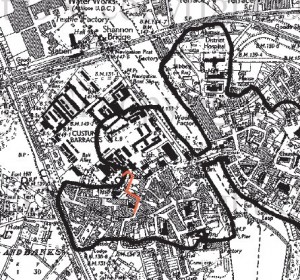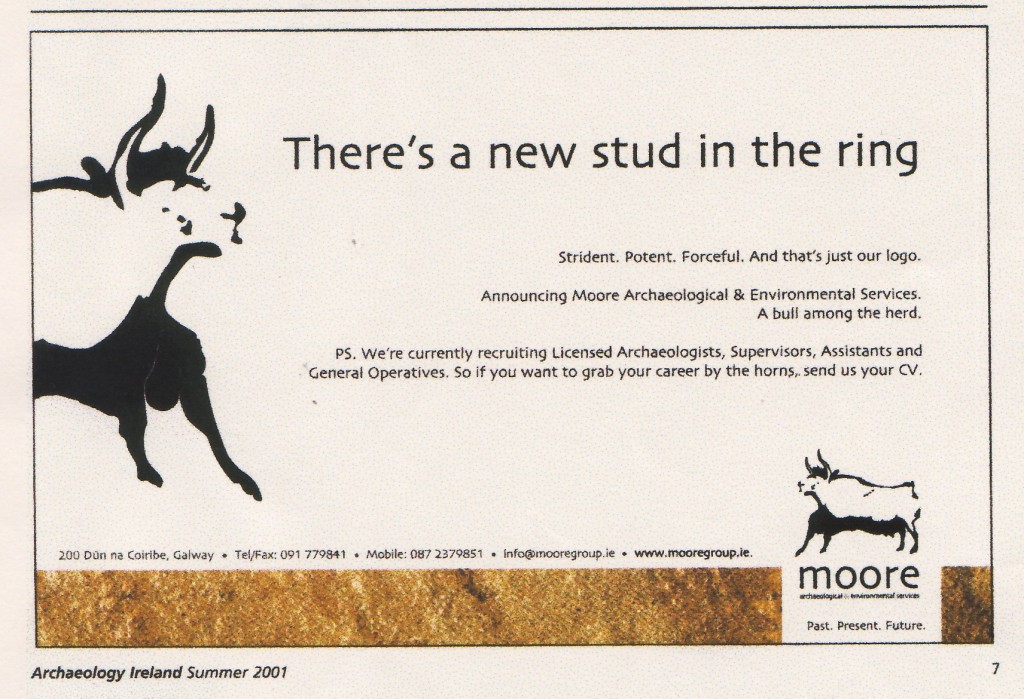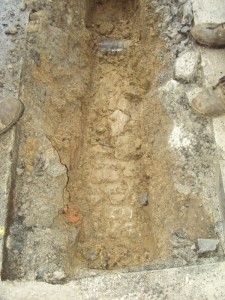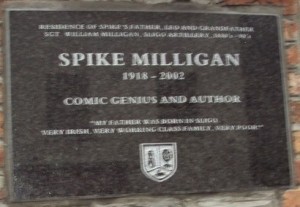Given that Moore Group has now survived ten years, and we’ve been blogging 4 years, we thought we’d share a ‘best of the blog’. Over the next few weeks we’ll post some of the better (in our mind) posts from the past few years. Our first blog post was in August 2007 and the count is now over 300 with over 700 comments. There’s a huge amount of very varied content on the blog, so please explore. there’s everything from lizards to planning to beer. So here’s the first ‘best of’ – a report from our trip to Oktoberfest in 2007. All part of our detailed research into the archaeology and history of beer, and done for purely scientific reasons, of course……
Oktoberfest
Munich’s Oktoberfest began in 1810 as a horse race to mark the marriage of the Crown Prince (Ludwig – see footnote) of Bavaria, later King Ludwig I (1786 – 1868) to Princess Therese of Saxe-Hildburghausen. The race was soon combined with the state agricultural fair, and food and drink offered. In the late 20th century the Munich breweries began setting up large temporary beer halls. Today the festival lasts two weeks and ends on the first Sunday of October. The stat’s are staggering: total beer consumption during the festival topped 6.9 million litres in 2006 and 6.5 million revellers consumed 102 roasted steers, 144,635 pairs of sausages (still don’t know why sausages are paired!), 500,000 roast chickens and 43,492 knuckles of pork. The festival is still held at the 42 hectare Theresienwiese (Field of Therese – maybe it should have been named Lola’s field? – see footnote), often called “d’ Wiesn” for short.
D’Weisn
Our first job is to recce for the rest of the company, to find the Wies’n, the 42 Ha former race course. Our plan a simple one – just follow the men in lederhosen and skip around the Beirleichen (“beercorpses”), taking care to avoid the hordes of drunk Aussies, Brits, Micks and Americans.
Day One, our destination is the Löwenbräu-Festhalle – first though, the three of us wander aimlessly through the park, gazing in wonder at the strange mechanical stalls, the never-ending food outlets, roundabouts and rides and the vast beer tents, mouths open, flies undone (like the Connemara man in Loch Vegas staring up at the Highscrapers). We’re lost in a giant German wonderland, surrounded by sausages, clockwork clowns, ghost trains and shooting galleries. Our senses are overwhelmed. No-one speaks, no-one leads, we just know where we’re going – somewhere to the left, the right and straight on, towards the big ferris wheel, via a burger joint, left at the laughing clown and wherever the path takes us. By midday, the place is host to what must be 200,000 beer fans. Here are all the Müncheners, Bavarians and people from every corner of the planet of every age and ethnic background dressed in their dirndl and lederhosen, about to consume vast quantities of food and beer. This is heaven, but loud, a loud sort of heaven, a great, big, busy lederheaven (sorry). This is where all the research has been leading, four years of hard work, four years of over-indulgence, all leading to this, the Löwenbräu tent at Oktoberfest.
Löwenbräu-Festhalle
It’s vast, at least 8000 people must be in here, and within minutes we hear the first chorus of the song we will know so well by the end of the day – ‘Ein prosit, ein prosit, gemütlichkeit…ein prosit, ein proooooosit, gemutlichkeit!’. Above the entrance is a 4.5m high lion who occasionally drinks from his beer. He is overshadowed by another tower where another drinking lion sits. Dead centre, there’s a bandstand, a brass band plays Oompah music, people are cheering, people are drinking, it’s awe-inspiring. But we’ve heard that 12:30 is way too late to get a table so we don’t have time to take this in, instinct takes over, we’re focused, we must find a seat. We pounce – six Argentines (Argentinians?) spot the empty table, but they’re too late, too polite, too weak – we beat them to the table and quickly all three of us spread out, stake our territory and glare. If we could urinate at each corner, we would. We win – at least we’ll beat the Argentinians at something this week.
Seconds later we are joined by our neighbours, three sweet young German men – let’s euphemistically refer to them as ‘sports enthusiasts’ who are liable to ‘collective effervescence’ (SELCE’s) – they quickly become our greatest friends. We make polite enquiries about their tattoos, but think better of that after a short, stilted conversation, let’s just talk about beer and soccer! Better. Then our first Maß (litres of beer) arrive, and all becomes a whirlwind of beer, choruses of ‘Ein prosit’ and more beer. We’re joined by some Aussies, some Kiwi’s and some Italians. Three hours pass, our other travel companions from home arrive and quickly leave to find a table – we don’t see some of them again for three days.
As Jack Bauer once said – ‘ we’re in a level three hot zone’, but he was talking about the Marburg virus, hemorrhagic fever and a suitcase nuclear device and we’re talking 10,000 toasts, whole and half chickens, Maß, sauerkraut and those ‘pairs’ of sausages again, but the danger for us is just as serious. We are risking our health and well-being in the name of science. But it’s all so incredibly good-humoured. We see no sign of violence, no sign of the hordes of drunken Aussies, no anger – it’s all love, all joy, all good fun. This is so not Ireland, like, not, whatever.
About two hours later we are moved on, our table reserved for some other Beirleichen. Our German friends depart, we head to the Augustiner Brauerei where things quickly fade into a haze of faces, strange hats and a range of nationalities. The Aussies are first to fall, followed by one of our company, and later, much later we stagger home to our hotel, waking up some time the next day.
Day 2, Day 3, Day 4
Day Two – Take Day One, stir, add different ingredients and repeat. Day Three, Ditto, Day Four, Get plane, Go home, Rest.
Home
It’s an event we’ll definitely go to again – but we’ll need a few years rest. While we did hear of some aggression and some reports of violence, the whole event is so good-natured it’s bizarre. Coming from Ireland, where even the German ambassador is appalled by our vulgarity, it’s difficult to see how an event like this, if anyone ever considered it, could work at home. Surely it would descend into a drunken, disgusting brawl. Or maybe I’m being too harsh, maybe we’ve all grown up, maybe an event like this could work at home.
We will of course attend the first Great Irish Beer Festival in Galway on the 20th of October to see how it goes and report back honestly and bluntly. And we’ll post the full Archaeology Ireland Article in the next week, here as opposed to the website. In the meantime Prost!
* Footnote
Ludwig suffered many scandals, not least those associated with one of his mistresses, Lola Montez/Eliza Gilbert. Lola, an Irish-born dancer and actress, as well as an infamous courtesan, gained notoriety throughout the world for her exotic dancing (Australian historian Michael Cannon says “In September 1855 she performed her erotic Spider Dance at the Theatre Royal in Melbourne, raising her skirts so high that the audience could see she wore no underclothing at all. Next day the Argus thundered that her performance was ‘utterly subversive to all ideas of public morality”). She earned further notoriety in Ballarat when after reading a bad review in The Ballarat Times she chased the editor, Henry Seekamp with a whip. We were reminded of her in Ballarat during a visit to Sovereign Hill in February where we saw a poster pinned to a wall advertising her appearance that evening. Montez is fictionalised in Royal Flash by the late George MacDonald Fraser, where she has a brief affair with Harry Flashman.

Georg Dury (nach Joseph Stieler) Lola Montez 1848 – Münchner Stadtmuseum







